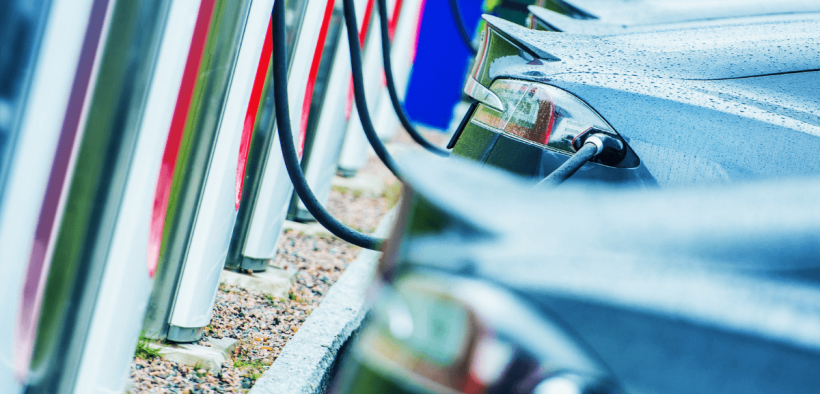Australia finally has an electric vehicle strategy. How does it stack up?
Share

Australia’s first National Electric Vehicle Strategy, released today, details the government’s long-awaited plans to accelerate the adoption of these vehicles.
Consultations on the strategy began last September. The climate change and energy minister, Chris Bowen, then promised the strategy would make Australia a globally competitive market for electric vehicles. Households and businesses would have access to the best modern transport technology at affordable prices.
But does the strategy live up to these expectations? Is it ambitious enough to meet our emission-reduction targets and international commitments? And how far does it go to align Australia with world-best practice for the transition to electric vehicles?
In short, the strategy represents a step in the right direction but falls short of introducing meaningful new measures to speed up this transition, at a time when urgent interventions are needed.
Why is the strategy important?
Transport is Australia’s third-largest – and fastest-growing – source of greenhouse gas emissions. Cars produce about half of all transport emissions.
One of the quickest ways to cut these emissions is to accelerate the current slow uptake of electric vehicles.
Although EV sales almost doubled between 2021 and 2022, they represented only 3.8% of all new vehicle sales in 2022. That’s well below the global average of 12-14%. And it’s way behind world leader Norway where 87% of cars sold now are electric.
An ambitious national strategy, backed by robust fuel-efficiency standards, is vital for decarbonising Australia’s road transport. It will also improve air quality and reduce our dependence on fossil fuels and imported oil.
What’s good and notable about the strategy?
During consultations on the strategy, around 500 submissions were received, representing the views of more than 1,500 individuals and over 200 organisations.
A key feature of the strategy is a commitment to introduce Australia’s first fuel-efficiency standard for new cars. Frustratingly, though, the government has delayed finalising the standard until the end of 2023, pending yet further consultations with industry on its development.
Australia is the only country in the OECD without mandatory fuel-efficiency standards for road transport vehicles. They are needed urgently now as an important step to increase the supply of electrical vehicles to Australia.
Bowen said today the government will not introduce any bans or stop companies selling any type of vehicle in Australia. Instead, they will be required to sell a “good proportion”‘ of electric and fuel-efficient vehicles. But no targets were mentioned.
Aside from the planned fuel-efficiency standard, the strategy introduces one other important initiative related to recycling and reuse of electric vehicles and batteries.
The rest of the strategy falls short of providing any substantial policy directions or targets to accelerate the transition to electric vehicles. Instead, it mainly confirms existing programs and policies, such as the electric car discount, and other already announced plans to upgrade charging infrastructure and the National Reconstruction Fund to boost local manufacturing.
What’s missing?
The strategy does not provide new incentives to help Australians with the cost of buying an electric vehicle. There is also no mention of targeted subsidies or measures to ensure equity. Instead, the government said it will work with states and territories on nationally consistent principles to ensure demand stays strong.
The strategy also fails to acknowledge the need for a holistic strategy to decarbonise road transport. Other policy interventions are needed to lower emissions from transport, which cannot be achieved through vehicle electrification alone.
The strategy also falls short on measures to accelerate the adoption of electric trucks and heavy commercial vehicles. Freight transport networks and supply chains present particular challenges for reducing emissions. It is equally important to incentivise adoption by providing cheap loans and increasing supply of reliable, sustainable and cost-effective alternatives to diesel trucks.
Importantly, too, the strategy does not stop subsidies and incentives for fossil fuel vehicles.
A credible strategy would need to consider a so-called feebate system. Feebates involve placing a levy on purchases of vehicles with high emissions and using the revenues to provide rebates for purchases of vehicles with zero or low emissions to offset their higher prices. Examples include France’s Bonus Malus and New Zealand’s Clean Car Discount. If developed carefully, these systems can be a cost-neutral method of discouraging purchases of high-emission vehicles and encouraging purchases of electric vehicles.
How does the strategy compare with plans overseas?
In the past few weeks, the United States and the European Union have announced some very ambitious plans that make the Australian strategy look very modest.
The US has proposed strict new emissions limits that would require two-thirds of vehicles sold in the US to be electric by 2032. The proposal, if ratified, will represent the most aggressive vehicle emissions reduction plan in the US. It will deliver, on average, a 13% annual pollution cut.
The EU also had plans to ban the sale of internal combustion engine cars from 2035. In February, the European Parliament approved the ban, which was later revised to allow some combustion engines running on e-fuels to be sold beyond 2035. Still, this remains one of the world’s strongest measures to phase out fossil-fuel vehicles.
The road ahead
By placing road transport decarbonisation on the national agenda, the National Electric Vehicle Strategy represents a positive step. But it falls short of matching the ambitious plans of other developed nations.
The much-anticipated fuel-efficiency standard will be key to demonstrate Australia’s commitment to reducing transport emissions. The standard will need to be mandatory, rigorous and robust. Clear targets on electric vehicle sales and timelines for phasing out internal combustion engine vehicles are needed.
If the standard is not carefully designed, we will continue to let down future generations, and the planet.
This article is republished from The Conversation under a Creative Commons license. Read the original article.
Hussein Dia is Professor of Civil Engineering specialising in Future Urban Mobility systems. He currently serves as Chair of the Department of Civil and Construction Engineering and Deputy Director of the Smart Cities Research Institute at Swinburne University of Technology.
He is a Chartered Professional Engineer with three decades of experience. He has worked extensively in collaboration with both the public and private sectors, including strong engagement with industry. His research interests are in next generation smart infrastructure systems and the convergence of technology, infrastructure and human elements in urban environments. His current work is focused on disruptive mobility and harnessing digital innovations to unlock potential opportunities for low carbon mobility.
Hussein is a Fellow of the American Society of Civil Engineers, Fellow of Engineers Australia and Fellow of the Institute of Transportation Engineers.




Today’s Pick
11th Annual Aus Goverment Data Summit
April 1, 2025
7th Annual NZ Government Data Summit
May 7, 2025
3rd Public Sector Comms Week
May 14, 2025
Subscribe
We send emails,
but we do not spam
Join our mailing list to be on the front lines of healthcare , get exclusive content, and promos.
AI appointment Australia Australian boost boosts business businesses covid-19 cyber cyber attack cyber security cybersecurity data data breach data management defence Digital employment enhance enhances fraud funding governance government grants infrastructure Innovation Lockdown management new zealand NSW NZ online privacy public Public Sector queensland renewable energy scams security Social Media Technology telecommunications victoria
-

Understanding and building your digital strategy
Digital Government, Opinion
-

Featured Leader: Jamie Morse on multi-channel strategies for communication
Communications, Featured Leader
-

Featured Leader: Tegan Tembe of NSW Treasury on creating solid planning strategies and processes
Featured Leader
-

Wirraka Maya Health Service improves patient care with My Health Record
Learning
Show More-

Effects of ineffective communication in the workplace
Communications, Personal Development
-

7 ways you can enhance your personal development skills
News, Personal Development
-

5 advantages of working in the public sector
News, Personal Development, Professional Development
-

7 causes of communication issues in the workplace
Communications, News, Personal Development
Show MoreLast Viewed